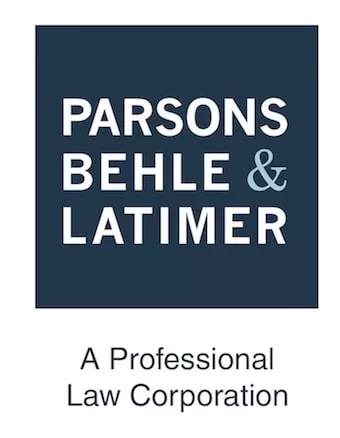On Dec. 1, 2020, a major amendment to Federal Rule of Civil Procedure 30(b) (6) took effect. The amendment is designed to encourage proportionality and equity when conducting discovery in a civil case. Parties are now required to "confer in good faith" over matters for a Rule 30(b)(6) examination. This article explores the practical effects of the amendment and how to achieve Rule compliance, while improving your Rule 30(b)(6) depositions.
The purpose of Rule 30(b)(6) is for deposition notice or subpoena directed to an organization or entity such as a corporation, partnership, association, or governmental agency. The deposing party must list in the notice the matters on which it seeks to examine the organization. Organizations do not need to produce one witness to speak to all matters but instead may designate multiple individuals ("designees") who can speak to certain matters on the list. The rule prior to the amendment stated the following:
In its notice or subpoena, a party may name as the deponent a public or private corporation, a partnership, an association, a governmental agency, or other entity and must describe with reasonable particularity the matters for examination. The named organization must then designate one or more officers, directors, or managing agents, or designate other persons who consent to testify on its behalf; and it may set out the matters on which each person designated will testify. A subpoena must advise a nonparty organization of its duty to make this designation. The persons designated must testify about information known or reasonably available to the organization. This paragraph (6) does not preclude a deposition by any other procedure allowed by these rules.1
It is worth noting that 30(b)(6) depositions, even post-amendment, are not only for organizations that are parties to the action but also for organizations that are not parties to the action. The deponent organization may designate "other persons" who consent to testify on its behalf.2 Further, the rule does not require the organization to produce the person(s) most knowledgeable on the designated subject matter—or even someone with personal knowledge; it is merely required to produce someone who is sufficiently informed to fully respond to questions about the designated topics.3 If an organization does not have an individual readily available to speak to the designated topics, it is required to prepare its designees to become knowledgeable on the topics. Such preparation may include reviewing documents and exhibits, speaking with past employees, and reviewing prior fact witness deposition testimony in order to become knowledgeable on the topics.4
The rule presents issues for both the party taking the deposition and the party (or nonparty) corporation being deposed. The deposing party must find a way to be sufficiently specific with its request without divulging too much of its strategy. Alternately, if the deposing party's specified topics are ambiguous or vague, the deponent organization must determine the best witness while still complying with the duty to produce a knowledgeable witness, or it may object to the topics as being too confusing.
When a party notices the deposition of an entity, regardless of the number of designees, it is considered one deposition for the purpose of the default limit of 10 depositions.5 Yet, each designee's deposition is considered a separate deposition for the purpose of duration (i.e., seven hours in one day under Rule 30(d)(1)).6 Theoretically, the pre-amended rule allowed the deposing party to create such an extensive list of matters on which it intended to examine the corporation, that numerous individuals from the corporation could be examined over dozens of hours under one deposition. Many critics of the pre-amended rule believed that, as written, the rule allowed for litigants to utilize these loopholes to their advantage, which led either to unfair burdens in discovery or poorly prepared deponents— neither of which is ideal.
One technique by which an organization may avoid undue burden is asking the court to limit the length of each designee's deposition on the precise matters listed by seeking a protective order under Rule 26(c). However, limiting the length of a designee's deposition still may not equip the organization with the proper tools to prepare for the deposition if the list is too broad, ambiguous, or poorly worded— rendering the deposition useless.
How then, can parties avoid undue discovery burdens and poorly prepared witnesses? Enter the 30(b)(6) amendment. In an effort to address these issues, the amended rule requires parties to meet and confer in good faith over the matters of examination.
Amendment
The amendment adds the following language to Rule 30(b)(6):
Before or promptly after the notice or subpoena is served, the serving party and the organization must confer in good faith about the matters for examination. A subpoena must advise a nonparty organization of its duty to confer with the serving party and to designate each person who will testify.7
Put simply, litigants are now required to meet and confer over the matters for examination. How does this play out in reality? How should it play out? Is it playing out the way it was intended?
Practice Tips
Be candid. The goal of the amendment is to provide litigants with an avenue for candid exchanges over matters on which the corporation will be examined. The purpose of discovery is to gather information. With some exceptions, the deposing party will be better served by being thorough in its notice to effectively gather the information necessary to represent its client's position. A deposing party can still strategically ask about certain topics without "letting the cat out of the bag," while ensuring the individual being deposed comes prepared.
Use the amendment to your advantage. According to the amendment, parties may meet and confer before drafting the notice or subpoena. If you are in the process of zeroing in on specific topics, this option offers an alternative to using broad and ambiguous language to capture an unnecessarily wide range of topics. In turn, conferring will also prepare the designee(s) to provide complete answers and help both parties evaluate if there will be disputes regarding the proposed deposition topics.
If you're already knowledgeable of the topics for examination, you can confer shortly after drafting the notice or subpoena to review the categories you expect the designee(s) to be prepared to answer.
This new requirement may be particularly beneficial to the deposing party as a way to avoid surprises on the day before or day of the deposition, when the designee either appears unprepared or objects to several of the deposing parties' categories.
Realize that this is an additional meeting. The rules already require that parties participate in a Rule 26(f ) conference, which occurs before any scheduling or case management conference, or filing any discovery motion. The newly amended rule requirement would occur in addition to the 26(f ) conference, or the typical conferring, regarding dates for the deposition.
Before or After? It is worth noting that, as worded, the amendment gives the deposing party control over the decision of whether to hold the meet and confer before sending the notice or subpoena or after. The deposing party may prefer to confer before sending the notice or subpoena (if it is a nonparty) in order to provide an opportunity for the deposing party to build rapport with the corporation or its lawyer and advise them of the information sought.
An advantage of holding the conference after notice is to give the corporation the opportunity to notify the deposing party of topics it finds objectionable (if any) and to explain why, or topics they find vague, thereby providing the deposing party an opportunity to send an amended notice with clarifying language. Holding the meeting after the notice may also be beneficial, as working from an existing list eliminates room for misunderstanding between parties.
Ultimately, the propounding party should consider whether to hold the conference before or after the notice or subpoena is served, based on the context of each individual case and the tendencies of opposing counsel.
Follow up. It may be beneficial for the propounding party to follow every meet and confer with either an amended notice or a written confirmation that no objections or concerns were made at the conference (or document any that were raised). Note that the rule does not require parties to come to an agreement. Although the rule does not require parties to follow up, doing so may eliminate untimely objections or confusion later.
Check your local rules. Remember to comply with your court's local rules. The Advisory Committee on Civil Rules considers each designee an individual deposition and does not limit the number of topics. Certain states have chosen to modify this in their local rules.
Is It Working?
Pros. The new requirement protects the propounding party by identifying legitimate (or illegitimate) objections or issues the deponent may have with topics or matters well before the deposition. Under Rule 30(c)(2), parties may object up to and at the point of examination, including to "any ... aspect of the deposition[.]"8 The potential for last minute objections does not allow for correction by the propounding party or proper preparation of the witnesses, had there been a correction. The amendment alleviates the potential for unprepared witnesses and/or unexpected last-minute objections to several categories, thereby potentially alleviating discovery disputes, motions to compel, and additional costs and fees. As mentioned above, the rule does not require parties to come to an agreement—parties may still bring appropriate and timely discovery motions, as needed. Essentially, the requirement enables parties to focus on what is at issue sooner rather than later.
Cons. Some critics of the amendment believe that a predeposition meet and confer is already relatively standard practice—whether regarding categories, dates, or documents—and that this requirement is unnecessary. Other critics believe this additional requirement will slow the process of discovery and result in an increase of predeposition discovery motions. Thus, while a purpose of the rule is to create more efficient and productive 30(b)(6) depositions, there may be an uptick in motions for protective orders or motions to compel before the depositions take place.
Conclusion
The amendment to the Federal Rule of Civil Procedure 30(b)(6) attempts to address loopholes that litigants have dealt with for some time. Many believe the amendment requires further adjustment to fully encompass the rule's intentions, while others believe it should not exist at all. Regardless, hopefully the amendment of this rule is a small step toward better deposition and litigation practices.
Footnotes
1. Fed. R. Civ. P. 30(b)(6) (2020).
2. Fed. R. Civ. P. 30(b)(6).
3. Great Am. Ins. Co. of New York v. Vegas Const. Co., 251 F.R.D. 534, 538 (D. Nev. 2008).
4. United States v. Taylor, 166 F.R.D. 356, 361 (M.D.N.C.), aff 'd, 166 F.R.D. 367 (M.D.N.C. 1996).
5. Fed. R. Civ. P. 30(a)(2) advisory committee's note (1993).
6. Fed. R. Civ. P. 30(d) advisory committee's note (2000).
7. Fed. R. Civ. P. 30(b)(6) (emphasis added).
8. Fed. R. Civ. P. 30(c)(2).
Originally published by Federal Lawyer, June 4, 2021.
The content of this article is intended to provide a general guide to the subject matter. Specialist advice should be sought about your specific circumstances.


